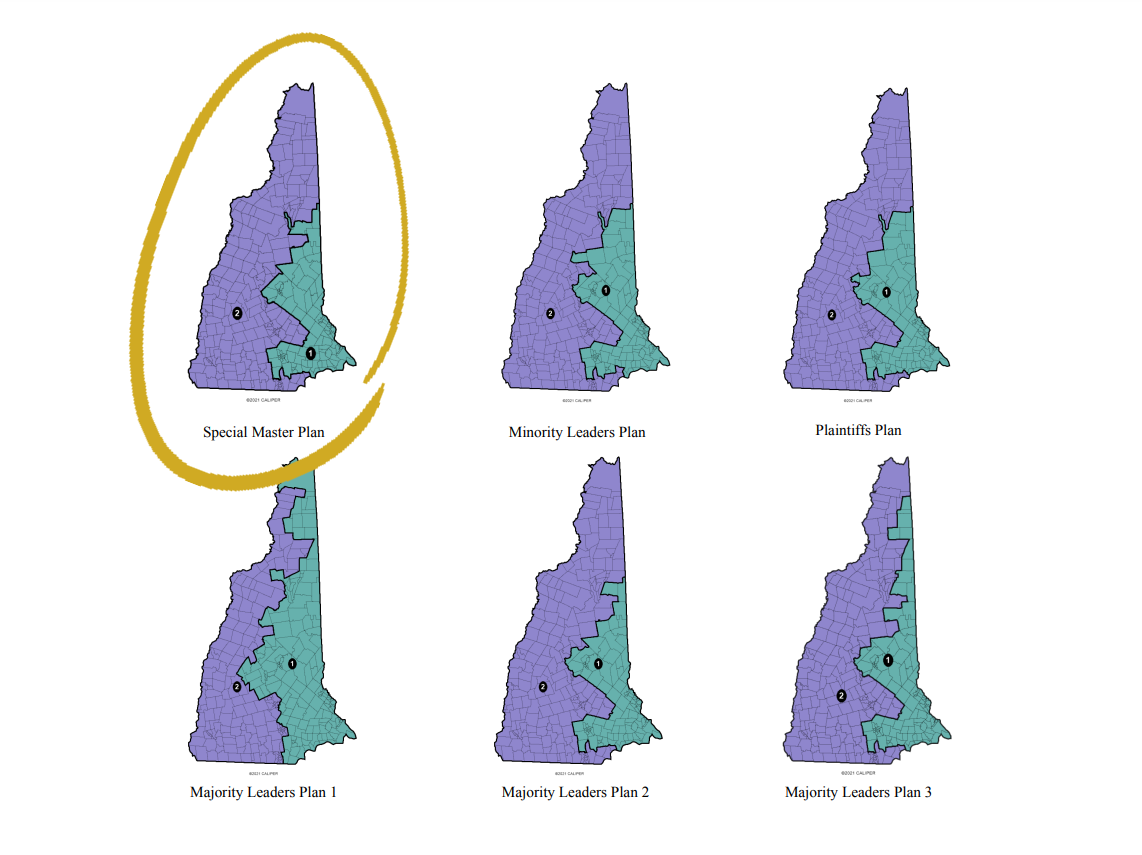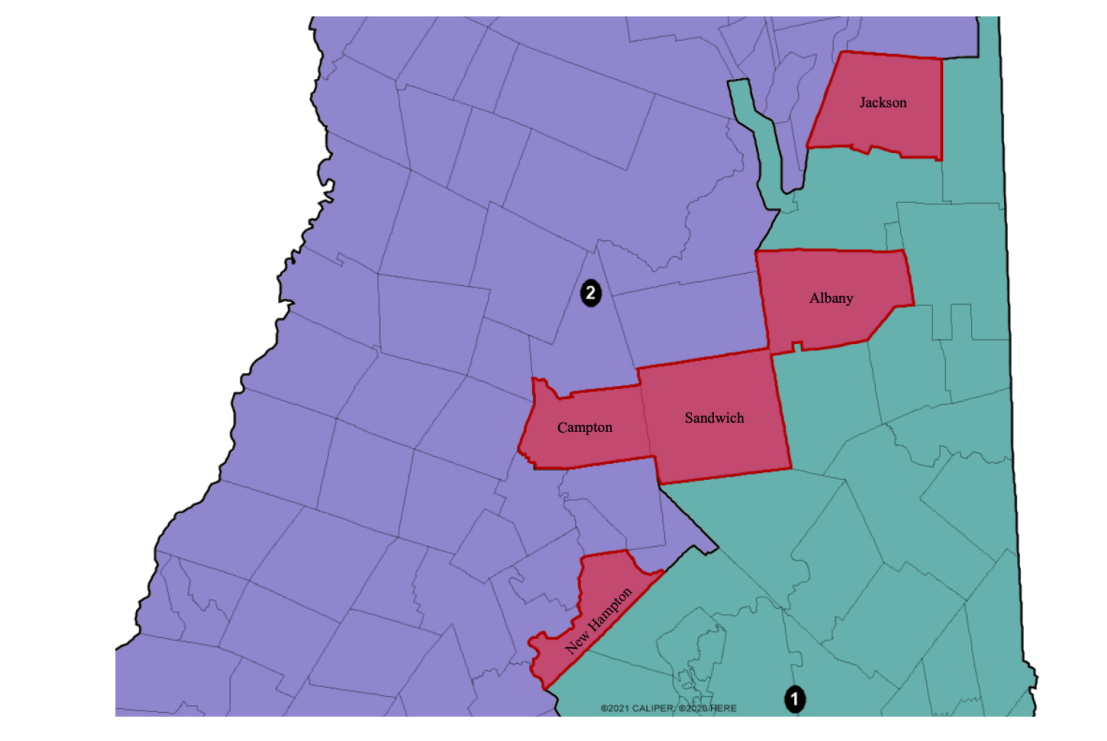Court releases NH congressional district maps drawn by special master

The New Hampshire Supreme Court released congressional district maps drawn by the appointed “special master,” Nathaniel Persily, a Stanford law professor, on Friday, a day after the Legislature failed to produce a viable one of its own by the legislative deadline.
The court rejected a motion to dismiss the plan filed by President Sen. Chuck Morse, of Salem, and House Speaker Sherman Packard of Londonderry, both Republicans, Thursday.
The map, which would establish voting districts for the next 10 years if enacted, moves five towns from the 1st district to the 2nd district in order to equalize the population between the two. The five are Albany, Campton, Jackson, New Hampton, and Sandwich.

The map was drawn using what’s called the “least change” method, with a goal of minimizing changes to the districts that have been in effect over the past 10 years while meeting equal population requirements. Under this map, District 1 has 688,764 people and District 2 has 688,765 people, a difference of only one person.
The Legislature is tasked with redrawing the state’s voting districts every 10 years, but the state is facing a lawsuit that asks the court to intervene, citing an apparent legislative impasse. Thursday, Republican lawmakers passed their latest attempt at a map, Senate Bill 200, which the governor immediately vowed to veto.
“The citizens of New Hampshire will not accept this map, which moves both members of Congress into the same district,” Sununu said in a statement. “Our races have to be fair, which is why I will veto this map.”
That veto would leave no proposed map by the Legislature standing, a situation in which the court said it would intervene.
“Because a congressional district plan for New Hampshire has yet to be validly enacted, the development and submission of the special master’s plan for the court’s consideration has become necessary,” Persily wrote in his plan Friday.
House Republicans spoke against the governor’s veto and the court’s involvement.
“From the beginning, the House has been willing to work with the governor on this constitutionally required process. For a reason that still escapes us, the governor has repeatedly decided to not participate in good faith despite our multiple requests for cooperation,” Rep. Ross Berry, a Manchester Republican said in a statement. “Trying to accommodate all the changes and His Excellency’s demands was exhausting.”
“(The governor) will now be solely responsible for circumventing the people’s elected representatives and sending this process to bureaucrats appointed by unelected courts who are not accountable to the people,” he said.
The American Civil Liberties Union of New Hampshire, however, celebrated the veto as a victory for New Hampshire’s voters.
“We thank Governor Sununu for his pledge to veto the map, which is gerrymandered, unfair, and designed to cheat the system for the next 10 years. Alongside Governor Sununu’s pledged veto, the N.H. Supreme Court’s recent opinion ensures that the people of New Hampshire will indeed have a fair congressional map,” said Devon Chaffee, executive director.
“Every Granite State voice should be heard equally in our elections, and it should be the voters themselves who choose their politicians—not the other way around,” she said.
Oral argument on the court’s proposed map is scheduled for Tuesday, May 31, at 9 a.m.
New Hampshire Bulletin is part of States Newsroom, a network of news bureaus supported by grants and a coalition of donors as a 501c(3) public charity. New Hampshire Bulletin maintains editorial independence. Contact Editor Dana Wormald for questions: info@newhampshirebulletin.com.
